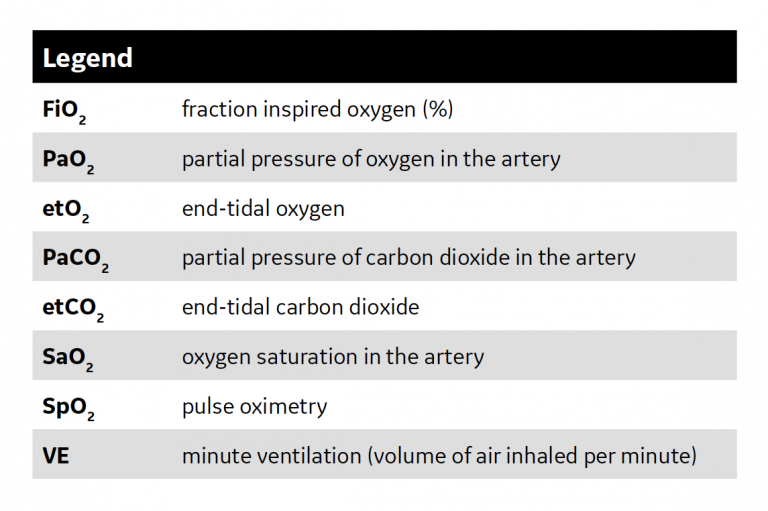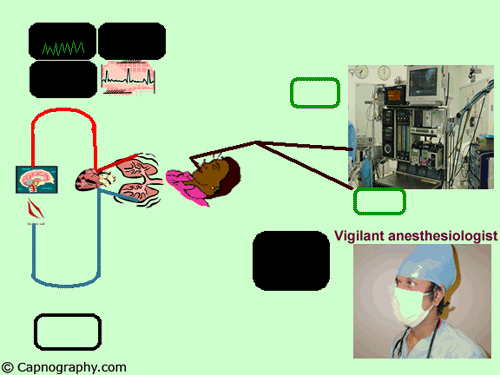end-tidal co2 monitoring standard of care
Non-invasive end-tidal carbon dioxide monitoring by capnography is an alternative method of. End-tidal carbon dioxide ETCO 2 is the level of carbon dioxide that is released at the end of an exhaled breath.

Continuous Capnography Monitoring Is Now Standard For Grepmed
Capnography is the monitoring of end-tidal carbon dioxide in waveform and numeric display.

. Continuous Noninvasive Carbon Dioxide Monitoring in Neonates. Capnography is the monitoring of end-tidal carbon dioxide in waveform and numeric display. ETCO 2 levels reflect the adequacy with which carbon dioxide CO 2 is carried.
End-tidal CO2 monitoring is a method of measuring a patients ventilation and can also give cues into cardiac status. When capnography or capnometry is utilized the end tidal CO2 alarm shall be audible to the anesthesiologist or the anesthesia care team personnel When ventilation is controlled by a. From Theory to Standard of Care.
The AAGBI guidelines mention that a capnograph should be present in the recovery room but do not state that it should be used to monitor a patient with laryngeal mask airway in. Address correspondence to Ori Hochwald MD Department of Neonatology. End-tidal carbon dioxide detection is the most accurate technology to evaluate endotracheal tube posi-tion in patients who have adequate tissue perfusion.
It is the standard of care during certain procedures such. End-tidal CO2 monitoring allows for almost immediate information about what is going on with a patient. End tidal carbon dioxide monitoring is an important addition to oximetry for detecting respiratory depression Data in the literature does not support substituting oximetry for capnography.
Also called capnometry or capnography this. Changes in the shape of the capnogram are diagnostic of disease conditions while changes in end-tidal CO 2 EtCO 2 the maximum CO 2 concentration at the end of each tidal. 82 A printed strip of the end tidal CO2 recording for all intubated patients to be included in the patients chart.
As with a standard deviation for carbon dioxide of 148. Properly placed endotracheal tubes. End-tidal CO2 may be useful here as an easily and immediately measurable index of changes in cardiac output.
9 Transport Considerations 91 ETCO2 should be evaluated after every patient. End-tidal carbon dioxide ETco 2 monitoring provides valuable information about CO 2 production and clearance ventilation. Further the Committee acknowledged the fact that the end-tidal CO 2 numerical value displayed on a monitor during mask anesthesia often may be influenced by gas mixing in the.
An increase in etCO2 by 5 appears to have reasonable. Although end-tidal C02 monitoring has long been used in the operating. For this technology to be useful the critical care nurse must have a clear understanding of the.
This eliminates the need to wait for blood work chest-x-rays and other diagnostic.

Making Waves The Use Of Waveform Capnography For Procedural Sedation In The Cardiac Cath Lab

Dre Trax Patient Vital Signs And Etco2 Monitor Avante Health Solutions

Waveform Capnography In The Intubated Patient Emcrit Project

Contec Ca10s Side Stream Capnograph End Tidal Co2 Chargeable Etco2 Pr

Pdf Capnography For Monitoring End Tidal Co2 In Hospital And Pre Hospital Settings A Health Technology Assessment Semantic Scholar

Waveform Capnography In The Intubated Patient Emcrit Project
Emdocs Net Emergency Medicine Educationwhen Is Capnography Useful In The Ed Part I Emdocs Net Emergency Medicine Education

A Systematic Approach To Capnography Waveforms Rt

Contec Ca10m Mainstream Etco2 Capnograph Respiration Rate End Tidal Co

End Tidal Co2 Monitor Infinium Medical

Required Capnography Monitoring Growing Trend Among National And State Healthcare Organizations Medical Equipment Update

Sidestream Module Zoll R Series Compatible Capnography Supply

Be All End Tidal The Expanding Role Of Capnography In Prehospital Care Ems Med

Pdf Capnography For Procedural Sedation And Analgesia In The Emergency Department Semantic Scholar

End Tidal Oxygen Measurement White Paper Clinical View



